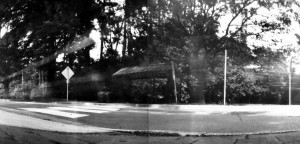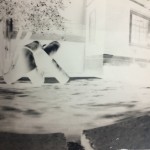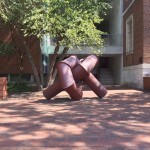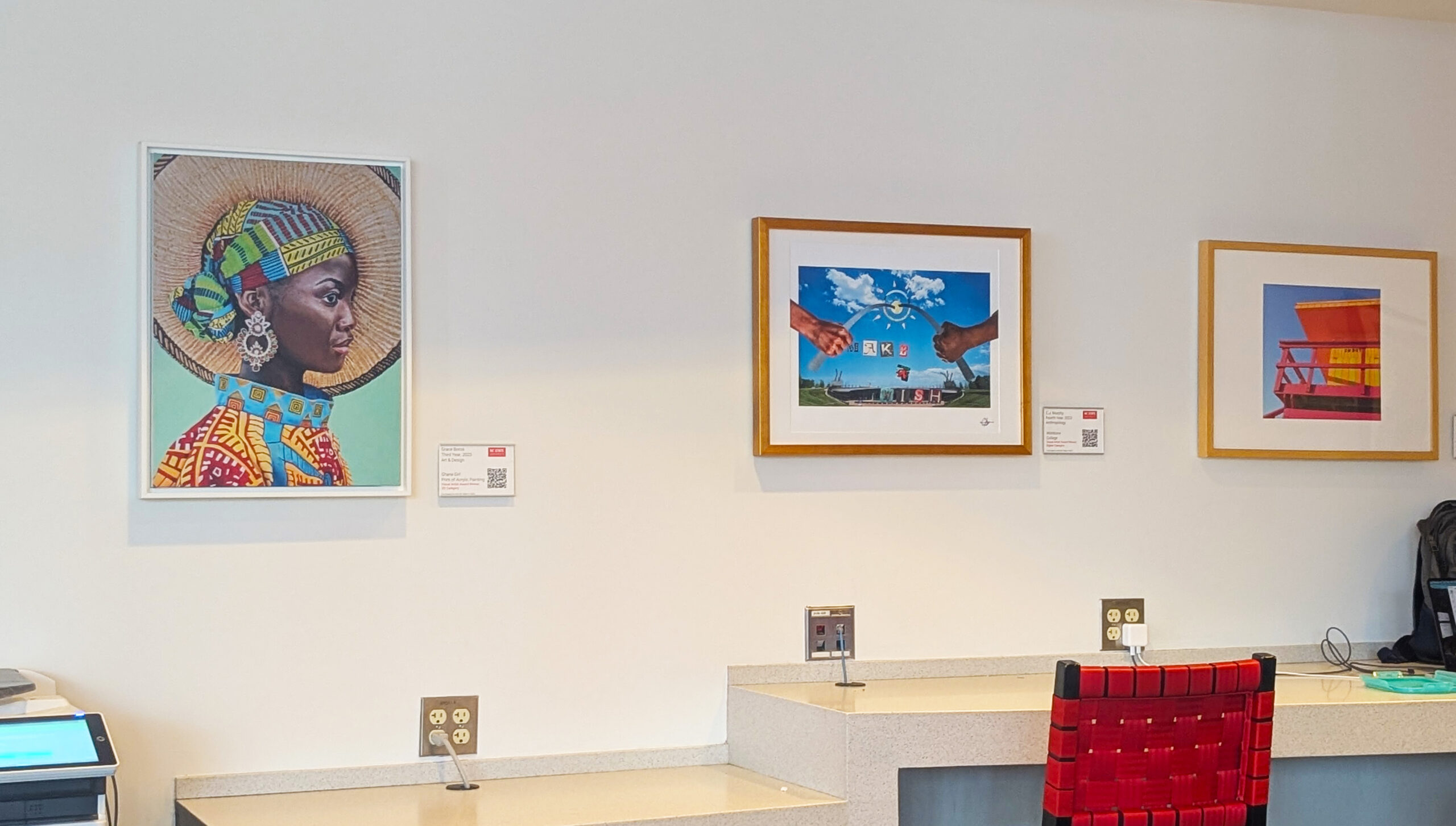The Pinhole Camera Challenge

When Crafts Center director, George Thomas, vividly explained the process of building a camera out of a disposable Altoids tin container or a shoebox, I found this extremely hard to believe. Could anyone really create a functional camera out of a shoebox?
What is pinhole photography?
This year, the Crafts Center’s 6th Annual Pinhole Camera Photography Challenge attracted both students and non-student participants to compete. The idea of the pinhole photography
competition is to construct an effectively light-proof, functional camera out of an unconventional and novelty item (such as a cigar box, an oatmeal box, or a cookie canister), take pictures with it to develop black-and-white photographs, and submit them to be judged for a chance to win a free crafts class.
Prior the competition, a lot of participants were curious, if not excited, as to what pictures they could take with their pinhole cameras. I asked around to get other competitors’ initial thoughts about the competition. Many expressed that their only concern was knowing how to properly operate the camera (the shutter must be manually operated because the camera requires a lengthy exposure). Others had already hardened their competitive mindset and were more worried about what the judges would specifically be looking for in their final photographic submissions.
Let the competition commence!
Building a camera is a challenge in itself, requiring a drilling of a ‘pinhole’ onto one side of a completely dark, enclosed container. This hole allows light rays of the object to only pass through this single point and project an inverted image of the object onto the opposite side of the box. Photographic paper is attached to this side of the box to capture the image. Finally, once you install a thin, metal screen (likened to a projector sheet) between the dark side adjacent to the pinhole, you are ready to start taking photos.
Photographers dispersed all over NC State’s campus, trying to take the best photos of campus scenery, historical buildings, and monumental statues. Along with constantly traveling long distances from the Crafts Center to certain locations and vice versa, the real challenge was knowing one’s own camera in terms of how much exposure time is needed to obtain a clear photograph (or to get a picture at all in some of my cases). Exposure time can vary from as little as one second to as long as over a minute. Each camera is built differently. One camera may require more exposure time than another on account of its size, shape, or dimensions.
A lot of participants, including myself, tackled this simply through a lot of trial and error, testing different length
 s of exposure time.
s of exposure time.
Once I took my photos, it was time to take the camera to the dark room for development. I removed the photographic paper from inside the camera and first placed it into the developer (Dektol) for two minutes max, then placed it in the indicator stop bath (acetic acid) for 30 seconds. Next, I deposited it in the fixer for at most four minutes before finally putting it in the wash for 10 to 20 minutes.
Once all of the photographs were completely dried from the wash, they were be collected, submitted and judged. Although clarity and even exposure of the photo were prime determinants of the winner, the judges’ main focus was whether the photograph best represented NC State University.
The Pinhole Camera Challenge is certainly a challenge, but it is a unique way to expand your horizons in the world of photography and gain a refreshing experience. Whether you are an experienced or hobbyist photographer, a photography enthusiast, or you just want to try something new, I encourage you to partake in the next challenge for noteworthy fun.
- Categories:


